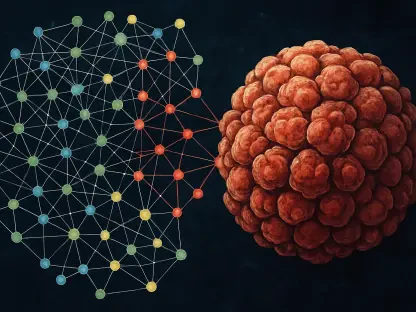Amid rising prevalence and societal impact, addressing Alzheimer’s disease demands breakthroughs in research and treatment. The pioneering initiative by the Indiana University School of Medicine, through the TREAT-AD (Target Enablement to Accelerate Therapy Development for Alzheimer’s Disease) drug discovery center, plays a vital role in combating this debilitating disease. This initiative emphasizes the exploration of novel drug targets that hold promise for revolutionizing treatment options. Through innovative approaches and interdisciplinary collaborations, researchers aim to translate foundational scientific insights into tangible therapeutic strategies.
Collaborative Efforts in Drug Discovery
A Confluence of Expertise
The TREAT-AD Center embodies a collaborative model, bringing together leading minds from institutions such as Purdue University and the Indiana Biosciences Research Institute, among others. Initiated over five years ago, this cooperative enterprise focuses on leveraging diverse expertise to drive drug discovery in Alzheimer’s research. At the helm of this initiative is Alan Palkowitz, alongside co-principal investigators like Bruce T. Lamb and Timothy Richardson. Under their guidance, the center merges talents from academia and the pharmaceutical industry, spanning fields like bioinformatics, structural biology, and clinical research. This gathering of experts creates an unparalleled concentration of efforts, positioning TREAT-AD as a distinctive force in Alzheimer’s therapeutic research.
Such interdisciplinary collaboration proves critical amid projections from the Alzheimer’s Association that indicate more than 13 million Americans could be affected by Alzheimer’s by 2050. The National Institute on Aging, recognizing the urgency, has renewed its support with a $41.6 million grant from 2025 to 2030 to foster ongoing advancements at TREAT-AD. The center’s efforts emerge as vital to meeting the pressing demand for effective treatments. This funding not only underscores the center’s accomplishments but also reflects a national consensus on the necessity of developing innovative solutions for this devastating disease.
Focus on Promising Drug Targets
A central thrust of the TREAT-AD initiative is its focus on identifying promising drug targets, a crucial step to advancing Alzheimer’s treatments. The researchers initially concentrated on an array of proteins connected to crucial brain cell functions, essential to delaying or mitigating Alzheimer’s onset and progression. Through meticulous analysis, they have refined their focus to 30 potential targets, further narrowing the field to a portfolio of five with significant therapeutic promise. One standout target is SHIP1, associated with late-onset Alzheimer’s and encoded by the gene INPP5D. Remarkable progress has been made in developing a SHIP1 inhibitor, which now heads toward clinical trial readiness—an essential milestone in the pathway to patient-impactful treatments.
The work surrounding SHIP1 exemplifies the transformative potential embedded in the TREAT-AD Center’s research methodology. Highlighted by Palkowitz, these accomplishments underscore the center’s role as a leader in Alzheimer’s research and drug discovery. Institutions like the Indiana Biosciences Research Institute contribute significantly, enhancing TREAT-AD’s efforts with robust drug discovery and translational research capabilities. The collective expertise at these institutions creates a holistic framework for addressing Alzheimer’s complexities, reinforcing the effectiveness of cross-disciplinary collaboration in overcoming intricate medical challenges.
Strategic Initiatives and Future Directions
Exploring Neuroinflammation and Diverse Approaches
Moving forward, the TREAT-AD Center is poised to expand its focus beyond the brain’s immune system to explore alternative drivers of neuroinflammation linked to Alzheimer’s later stages. In the next five years, the agenda includes diversifying drug targets and exploring the potential of antibodies and silencing RNAs. This broadened scope signifies a progressive shift from conventional methodologies, aiming for a deeper understanding of disease mechanisms. By incorporating diverse approaches, including advanced therapeutic models, the center seeks to innovate in developing multifaceted treatment options for Alzheimer’s disease.
In tandem with broadening scientific exploration, the center places significant emphasis on biomarkers—pivotal indicators of Alzheimer’s presence and progression within the body. Led by Jeff Dage, recognized for his groundbreaking work with the phosphorylated tau 217 biomarker, this research crucially aims to integrate biomarkers in evaluating new drug molecules and assessing disease dynamics. These efforts culminate in a comprehensive strategy where biomarker implementation ensures personalized approaches to treatment, offering detailed insights into patient pathology and facilitating more precise monitoring of therapeutic efficacy.
Navigating Towards Clinical Applications
In the face of the increasing prevalence and substantial societal repercussions of Alzheimer’s disease, breakthroughs in research and treatment are more crucial than ever. The Indiana University School of Medicine has taken a groundbreaking step through its TREAT-AD (Target Enablement to Accelerate Therapy Development for Alzheimer’s Disease) drug discovery center. This initiative plays an essential role in the fight against this debilitating condition. It focuses on identifying and exploring novel drug targets that could potentially revolutionize treatment options for Alzheimer’s. By leveraging cutting-edge research methods and fostering interdisciplinary collaborations, the center aims to convert fundamental scientific knowledge into real-world therapeutic strategies. This holistic approach not only highlights the importance of innovation in medical research but also underscores the potential for collaborative efforts to bring about significant advancements in treating Alzheimer’s disease. Through these efforts, they hope to make a meaningful impact on the lives of those affected by this challenging illness.









